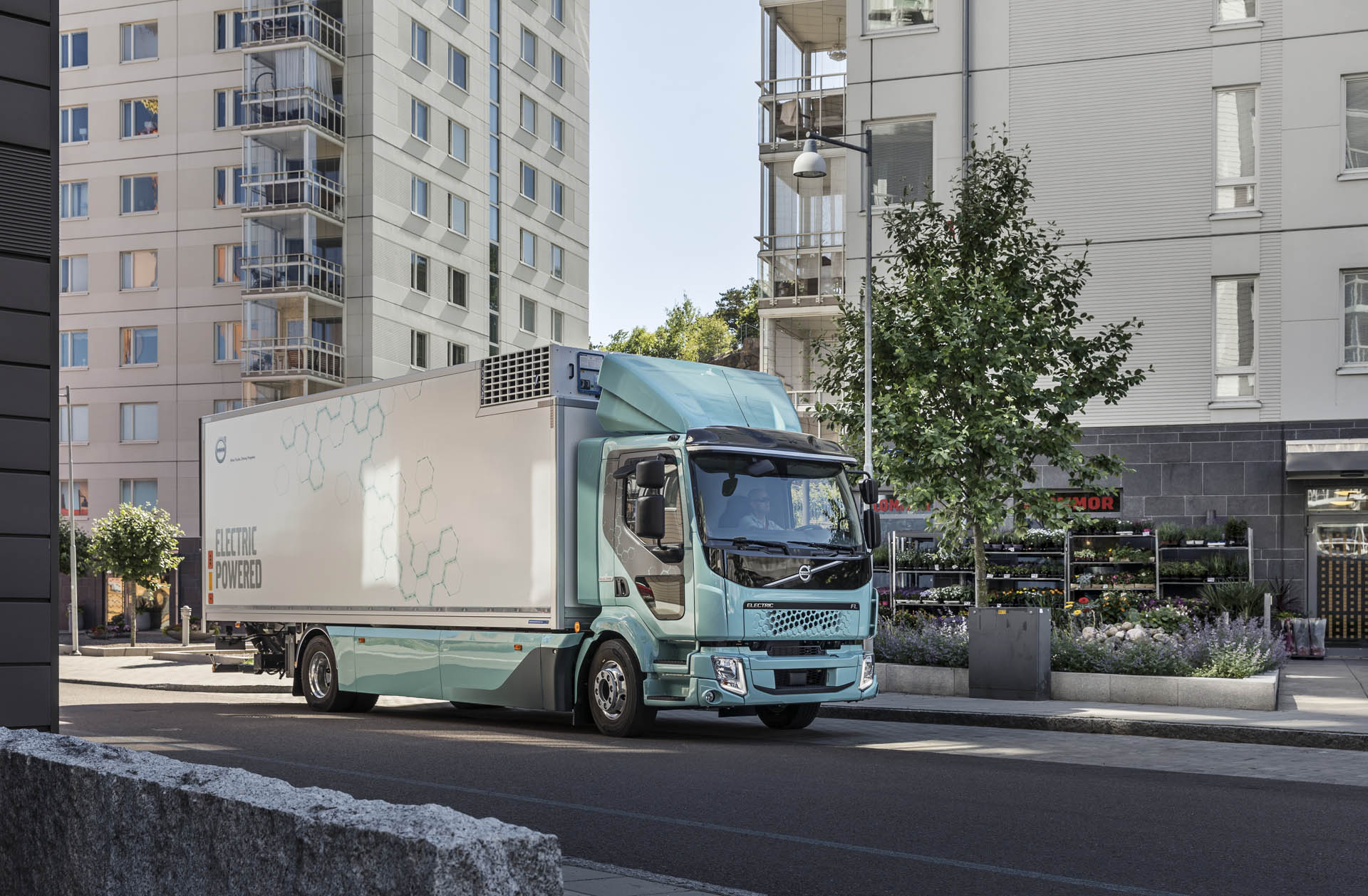The heavy-duty transport sector is in the midst of a paradigm shift to sustainable, zero-emission technologies. Volvo Group, as well as the entire European truck manufacturing industry, is driving the development of electrified vehicles and machines, powered by batteries and fuel cells, as well as automated solutions for the benefit of customers, society and the environment.
The European-based truck industry shares a joint pledge to lead the global transition to carbon neutrality in the on-road freight sector by 2050. Given the long operating life cycle of trucks, this actually implies that already by 2040 all new commercial vehicles sold must be fossil free.
Cities & the EU’s climate ambitions for 2050
If Europe is to become the first climate-neutral continent, one important element is to make cities climate neutral. The EU Sustainable and Smart Mobility Strategy set the target of ‘100 European climate neutral cities by 2030’. Several major urban areas are already exploring policy tools to support this ambition on a local and regional level.
The Netherlands are at the forefront. The Dutch government has developed a Climate Agreement with the target to have zero-emission zones in city logistics established in 30 to 40 major cities by 2025. Nineteen cities have already officially announced that they will be implementing zero-emission zones in 2025 in pursuit of emission-free goods deliveries.
But city access policies in most of the EU are fragmented. A truck or bus being granted access in one urban area might not benefit the same type of access in a different city in an adjacent Member State. For example, Copenhagen puts the limit to Euro V, while Malmö has Euro VI – two cities with less than 8 km driving distance in between. Since Euro VI is the latest emission step in Europe, implemented as a requirement for vehicle sales in EU since 2014, it would be natural to harmonise this to Euro VI for all cities in Europe. The good news for now is that Copenhagen will finally align with Malmö and use Euro VI from 2022, but this kind of alignment is needed on a much broader scale.
Time to harmonise the way urban areas are regulated
The Volvo Group is urging national and local policy makers across the EU to jointly decide and implement firm plans to regulate urban areas into zero-emission zones. This is one of the best ways that they could boost the Green Deal while incentivising green innovation in the transport industry. There are many benefits to a coordinated implementation of zero-emission zones. First and foremost, it would be an important step towards a climate neutral continent. According to the European Commission, cities cover about 3% of the land on Earth, yet they produce about 72% of all global greenhouse gas emissions. It is estimated that by 2050 almost 85% of Europeans will be living in cities. Simultaneously, it would address several other areas affecting the wellbeing of citizens in Europe, e.g. air pollution and noise.
Looking ahead, the challenge today and tomorrow for trucks and buses is the transition from diesel-fuelled vehicles to electromobility in zero emission vehicles. The technology is on its way, but the harmonised implementation of zero-emission zones across the single market is what would create a solid and significant demand for zero-emission vehicles – a very important basis for both vehicle manufacturers and infrastructure providers.
The majority of these vehicles will be powered by battery electric drivetrains. Larger volumes will speed up cost reductions on all levels and thereby reduce transport costs. This is key to a successful Green Deal.

Furthermore, zero-emission zones with good geographical coverage will support the rationale for implementing regional and long haul zero-emission transportation between zero-emission cities and regions, without the need for additional EU regulation. This could break new ground for the next major innovation step in climate neutral transportation, hydrogen and fuel cell operated heavy goods transportation.
Deeper integration of various markets across the EU can secure Europe’s global leading position in efficient and sustainable transport. It is the opportunity to strengthen the innovation and competitiveness of the sector. Let’s not miss this chance.
The Netherlands are at the forefront. Nineteen cities have already officially announced that they will be implementing zero-emission zones in 2025 in pursuit of emission-free goods deliveries. But city access policies in most of the EU are fragmented. A truck or bus being granted access in one urban area might not benefit the same type of access in a different city in an adjacent Member State.
The harmonised implementation of zero-emission zones across the single market is what would create a solid and significant demand for zero-emission vehicles – a very important basis for both vehicle manufacturers and infrastructure providers.

